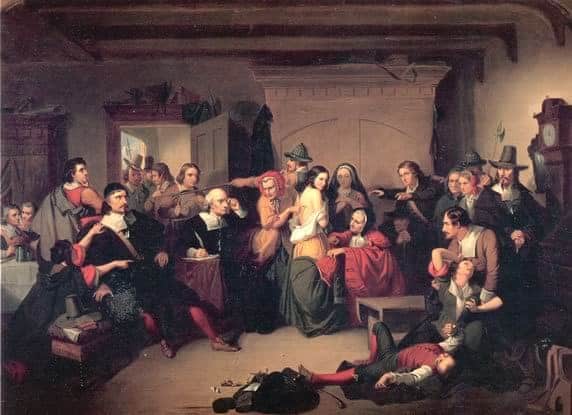Less than 100 years after the Reformation, England was in a state of chaos. Reform religions sprung up and demanded that the Anglican Church reform and move away from its Roman Catholic traditions. Puritans were particularly staunch in their demands to make the church more “pure” in its doctrine, worship, and personal piety. Puritans migrated to New England to begin their “holy commonwealth.” In order to accomplish this goal, they made church and state one in the same and banished, imprisoned, fined, tortured, and executed those that did not align with Puritan beliefs.

1. The Puritan Colony that Persecuted and Started it All, the Massachusetts Bay Colony 1628-1691
Merchants and investors formed the Massachusetts Bay Company in order to establish an English settlement in New England. They hoped that men and women would settle, build homes, start farms, and create towns around the Massachusetts Bay. New England farmers would grow food and cut timber that would be shipped to England, made into marketable goods, and then shipped to the sugar islands in the Caribbean. Puritan ministers were eager to leave the chaos of England that had erupted in the 1620s. They convinced their congregants to join the building of a “holy commonwealth” in New England.
Puritan minsters ensured that the Bible was used to dictate their legal ordinances and laws as well as guide their religious doctrine. Punishment did not necessarily fit the crime. A man found guilty for speaking out against his minister could have a hole bored into his tongue. Someone who failed to attend church could be sentenced to having their ear cut off. Women that did not obey their husband or minister could be banished from the colony. In the mid-1600s, Quakers were hanged simply for setting foot in the colony!
The Massachusetts Bay Colony was controlled with an iron fist. Punishment and executions were public affairs as Puritan authorities were determined to use the criminals as an example to all colonists. It was common for a long-dead body to remain hanging in the gallows with a sign stating the crime. Intolerance was the way in which Puritan magistrates and ministers governed the colony. It remained this way until the 1690s when the colony came under British colonial control.
The Puritans left England to create their “City upon a Hill” in part because they felt oppressed by the Church of England. Yet, it was the harsh punishment at the hands of Puritan ministers and magistrates that influenced the King of England to take a more active role in controlling his colonies. Because of how intolerant the Massachusetts Bay Colony was, freedom to practice any religion without fear of persecution was enshrined into the First Amendment of the US Constitution.

